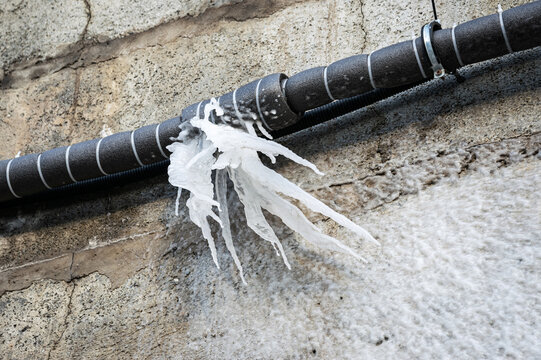Essential Advice for Avoiding Frozen Pipes in Winter Seasons
Essential Advice for Avoiding Frozen Pipes in Winter Seasons
Blog Article
Are you currently trying to find facts and techniques around How To Avoid Freezing Pipes?

Winter can ruin your pipes, especially by freezing pipes. Here's how to stop it from taking place and what to do if it does.
Intro
As temperatures drop, the threat of icy pipelines boosts, potentially bring about expensive repair work and water damages. Comprehending how to stop icy pipelines is critical for home owners in chilly climates.
Understanding Frozen Pipelines
What triggers pipelines to freeze?
Pipes ice up when revealed to temperature levels below 32 ° F (0 ° C) for extended periods. As water inside the pipelines ices up, it expands, taxing the pipeline walls and possibly triggering them to burst.
Threats and damages
Icy pipes can bring about water system disruptions, residential or commercial property damages, and expensive fixings. Burst pipelines can flooding homes and trigger considerable architectural damage.
Indications of Frozen Piping
Identifying frozen pipelines early can avoid them from rupturing.
Exactly how to determine frozen pipes
Search for lowered water circulation from faucets, unusual odors or noises from pipelines, and noticeable frost on subjected pipes.
Prevention Tips
Insulating vulnerable pipelines
Cover pipelines in insulation sleeves or utilize heat tape to protect them from freezing temperature levels. Concentrate on pipes in unheated or external locations of the home.
Heating strategies
Maintain interior rooms properly warmed, particularly areas with pipes. Open cupboard doors to allow cozy air to circulate around pipelines under sinks.
Safeguarding Outside Plumbing
Garden pipes and outdoor faucets
Detach and drain pipes yard hose pipes before winter season. Mount frost-proof spigots or cover exterior faucets with shielded caps.
What to Do If Your Pipes Freeze
Immediate actions to take
If you believe frozen pipes, maintain taps open to alleviate stress as the ice thaws. Make use of a hairdryer or towels soaked in hot water to thaw pipes gradually.
Long-Term Solutions
Architectural changes
Consider rerouting pipes away from outside wall surfaces or unheated locations. Include added insulation to attic rooms, cellars, and crawl spaces.
Updating insulation
Buy high-quality insulation for pipes, attics, and wall surfaces. Correct insulation aids keep regular temperature levels and minimizes the danger of frozen pipes.
Conclusion
Preventing icy pipelines needs positive steps and quick feedbacks. By recognizing the causes, signs, and safety nets, house owners can safeguard their pipes throughout cold weather.
5 Ways to Prevent Frozen Pipes
Drain Outdoor Faucets and Disconnect Hoses
First, close the shut-off valve that controls the flow of water in the pipe to your outdoor faucet. Then, head outside to disconnect and drain your hose and open the outdoor faucet to allow the water to completely drain out of the line. Turn off the faucet when done. Finally, head back to the shut-off valve and drain the remaining water inside the pipe into a bucket or container. Additionally, if you have a home irrigation system, you should consider hiring an expert to clear the system of water each year.
Insulate Pipes
One of the best and most cost-effective methods for preventing frozen water pipes is to wrap your pipes with insulation. This is especially important for areas in your home that aren’t exposed to heat, such as an attic. We suggest using foam sleeves, which can typically be found at your local hardware store.
Keep Heat Running at 65
Your pipes are located inside your walls, and the temperature there is much colder than the rest of the house. To prevent your pipes from freezing, The Insurance Information Institute suggests that you keep your home heated to at least 65 degrees, even when traveling. You may want to invest in smart devices that can keep an eye on the temperature in your home while you’re away.
Leave Water Dripping
Moving water — even a small trickle — can prevent ice from forming inside your pipes. When freezing temps are imminent, start a drip of water from all faucets that serve exposed pipes. Leaving a few faucets running will also help relieve pressure inside the pipes and help prevent a rupture if the water inside freezes.
Open Cupboard Doors
Warm your kitchen and bathroom pipes by opening cupboards and vanities. You should also leave your interior doors ajar to help warm air circulate evenly throughout your home.

I ran across that piece on Helpful Tips to Prevent Frozen Pipes this Winter when doing a search on the search engines. Are you aware of anybody else who is involved in the topic? Feel free to share it. I treasure your readership.
Book Inspection Report this page